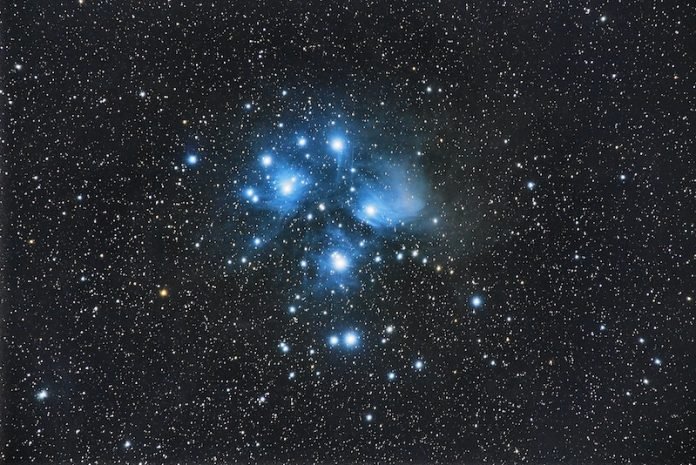
In a groundbreaking study published in The Astrophysical Journal, an international team of scientists, including researchers at Chiba University, have successfully measured the total amount of matter in the universe for the second time.
The study reveals that matter constitutes 31% of the universe, with the remaining 69% made up of dark energy.
Understanding the Composition
Cosmologists estimate that just 20% of the total matter in the universe is “baryonic” matter—things like stars, galaxies, atoms, and even life.
The rest, about 80%, is dark matter, the nature of which remains mysterious.
“It may consist of some as-yet-undiscovered subatomic particles,” says Dr. Mohamed Abdullah, the study’s first author and a researcher at the National Research Institute of Astronomy and Geophysics-Egypt, Chiba University, Japan.
The team employed an established technique, comparing the observed number and mass of galaxy clusters per unit volume with predictions from numerical simulations.
“The number of clusters observed at the present time, known as ‘cluster abundance,’ is very sensitive to cosmological conditions, particularly the total amount of matter,” explains co-author Gillian Wilson from UC Merced.
However, the team faced challenges in measuring the mass of galaxy clusters, largely because most of it is invisible dark matter.
To solve this problem, they used an indirect tracer known as mass richness relation (MRR). In simpler terms, more massive clusters contain more galaxies, and the number of galaxies can be used as an indicator of a cluster’s total mass.
Confirming the Data
After measuring the number of galaxies in each cluster using data from the Sloan Digital Sky Survey, the researchers found that the best match between their observations and simulations pointed to a universe made up of 31% matter.
This result is in excellent agreement with observations made using cosmic microwave background (CMB) from the Planck satellite—a completely independent technique.
Future Applications
The paper highlights the team’s innovative use of spectroscopy to accurately measure distances to each cluster. Prior attempts to employ the MRR technique relied on less precise imaging techniques.
The study also suggests that the MRR technique can be applied to data from upcoming large-scale surveys using advanced telescopes, such as the Subaru Telescope, the Dark Energy Survey, and the James Webb Space Telescope.
“This work further demonstrates that cluster abundance is a competitive technique for constraining cosmological parameters,” says Tomoaki Ishiyama from Chiba University.
Overall, the study not only provides a reliable estimate of the universe’s matter density but also paves the way for future research using more advanced techniques and technologies.
The research findings can be found in The Astrophysical Journal.



